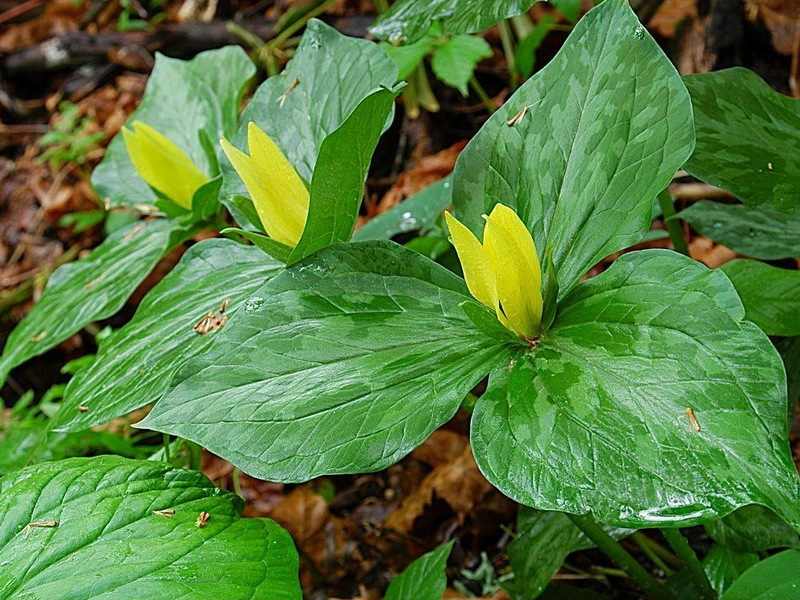Toadshade (Yellow Trillium)
Trillium luteum
Click here to download a PDF of this plant information page (for printing).

Sun Exposure: Part Sun, Shade
Season of Interest: Spring
Bloom Time: March - April
Bloom Color: Yellow
Height: 8 to 12 in.
Spread: 8 in.
Spacing: 12 in.
Water Needs: Above average
Maintenance: Very little
Soil Type: High in organic mqatter
Soil pH: Acidic, Neutral
Soil Drainage: Well drained
Pests: Slugs
Diseases: None
Wildlife: Bees, Butterflies

Description:
Yellow Trillium, also known as Toadshade, is a lovely woodland wildflower native to the Southeastern US. It has sessile flowers (not arising from a stalk) which are pale yellow and lemon-scented. The three-parted whorl of leaves is mottled with silver, making for an eye-catching addition to the shade garden. If the plants are left undisturbed and sited in favorable conditions (well-draining, rich, moist woodland soils) they will slowly spread to form loose, attractive colonies. They will go summer dormant after setting seed. For more information see:
plants.ces.ncsu.edu/plants/trillium-luteum
Care and Growing Tips:
Trillium plants can grow in a variety of climates and are relatively low maintenance. Here's what you need to know to make the wildflowers a part of your garden.
Adding trillium to your woodland garden requires coordinating with the seasonal calendar and having patience as your plants grow.
Choose a spot with partial shade to full shade. Since trilliums grow on the forest floor and require little sunlight, they are good candidates for a shade garden. They thrive in USDA Hardiness Zones 4–8.
Plant your trilliums loamy soil that is high in organic matter. Be patient with trillium plants, as they can take several years to become fully established. Given the right environment, trilliums are relatively low-maintenance. Keep the trillium evenly moist during its growing season and incorporate plenty of compost or organic matter into the soil to promote the plant's development. You should also cover the soil with leaf mulch to regulate the temperature and moisture underneath. Trilliums require less moisture from about late summer through winter when they are dormant.